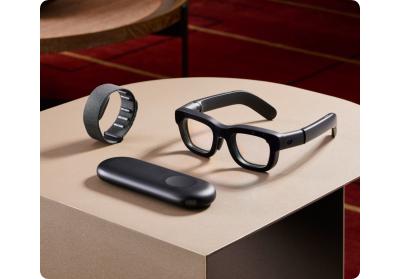 UK-based Plessey Semiconductors is a design and manufacturing company focused on GaN-on-Silicon micro-LEDs.
UK-based Plessey Semiconductors is a design and manufacturing company focused on GaN-on-Silicon micro-LEDs.
Plessey developed unique monolithic micro-LED process technology that can be used to produce Micro-LED displays without a transfer process.
Over the years, the company demonstrated several prototypes and has also launched two product lines (for segmented microdisplays and full dot-matrix ones). In 2020, however, Plessey announced a partnership with Facebook under which Plessey will dedicated all of its manufacturing operations to support Facebook with its own product development. While not exactly an acquisition, this is pretty close.
In 2023, it was reported that the development based on Plessey's technology and processes did not progress as expected, and Meta did not manage to develop high brightness microLEDs or a process with satisfactory yields. This report was not confirmed.
Tamerton Road
Roborough
Plymouth
PL6 7BQ
United Kingdom
Plessey and Meta develop a 6 million nits 5 micron microLED microdisplay
Plessey Semiconductors, together with Meta Platforms, announced that they have developed a native red microLED microdisplay that achieves up to 6 million nits with a chip size of 5 um. Plessey says that this is world's brightest microLED device at this size.
In March 2020, Meta signed a deal with Plessey to dedicate all of Plessey's microLED manufacturing operations to support Meta with its own product development. Facebook pretty much acquired Plessey's microLED operations with this exclusive deal.
Meta announces $10,000 AR glasses powered by microLED microdisplays
Meta announced a new AR headset, called Orion. The glasses, that Meta says costs $10,000 to produce (and will probably be sold to something like that as well) are powered by microLED microdisplays. Orion packs quite advanced technology, including Silicon Carbide lens and advanced AI, but this is of course actually a prototype device, that Meta will offer commercially to developers or (very) early adopters. The Orion glasses weigh 98 grams, which still way more than what people consider to be light weight glasses (usually under 30 grams).
It is very nice to see the adoption of microLED technology by Meta. While some speculate that these microLED displays are made in-house by Meta using the Plessey Semiconductor technology and production line, it is also known that the company gave up on that course, and others speculate that these displays are produced by JBD, and are made from 3 separate monochrome microLED panels.
Reports suggest Meta is abandoning Plessey's microLED microdisplay technology and processes
In March 2020, Facebook (now Meta) signed a deal with UK-based MicroLED microdisplay developer Plessey Semiconductor to dedicate all of Plessey's microLED manufacturing operations to support Facebook with its own product development. Facebook pretty much acquired Plessey's microLED operations with this exclusive deal.
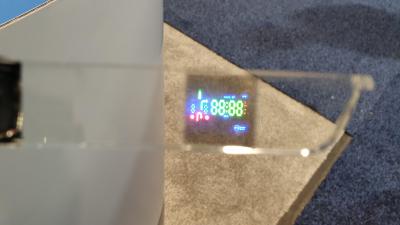
Facebook hoped to utilize microLED microdisplays in future AR headsets. According to a new report, the company has decided to use LCoS microdisplays for its first consumer AR device, codenamed Artemis, which will be released (if all goes according to plan) in 2027. It seems as if the development based on Plessey's technology and processes did not progress as expected, and Meta did not manage to develop high brightness microLEDs or a process with satisfactory yields.
Vuzix - we'll release our first microLED smart glasses in 2021
Vuzix announced that it is developing its next-generation Smart Glasses, that will be powered by microLED microdisplays and other advanced technologies. The first such glasses are expected to become available in 2021.
Vuzix is developing a wide range of devices, ranging from "reasonably priced consumer-facing product" to a higher end enterprise version with built-in cellular connectivity. Vuzix says that the new advanced waveguide optics and binocular displays will enable a larger field of view and an enhanced user experience. Vuzix is developing solutions based on both monochrome and full-color microLEDs.
Plessey signs deal with Facebook to dedicate all of its MicroLED operations to support Facebook's AR project
UK-based GaN-On-Si MicroLED microdisplay developer Plessey Semiconductor announced a partnership with Facebook - in fact Plessey will dedicated all of its manufacturing operations to support Facebook with its own product development.

Plessey says that its displays will be used to support Facebook's prototypes, and the company will develop new microLED technologies to future AR/VR applications.
Plessey developed passive-matrix monochrome microLED microdisplays
MicroLED microdisplay developer Plessey Semiconductor announced that it has developed new passive-matrix monochrome microLED microdisplays. Plessey says it can customize the resolution and color of its PM displays to the customer requirements.
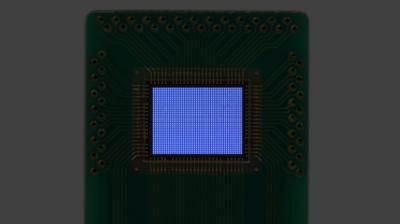
Plessey demonstrated its first such PM microdisplays with the 48x36 blue panel you see above. The company says it plans to introduce 384x128 monochrome and 128x128 RGB passive matrix microdisplays by the end of 2020.
Plessey and Compound Photonics produce first microLED display modules
In October 2019 MicroLED microdisplay developer Plessey Semiconductor announced a partnership with Compound Photonics to co-develop microLED display modules. The two companies announced today that the first fully addressable microLED display module was produced and tested.
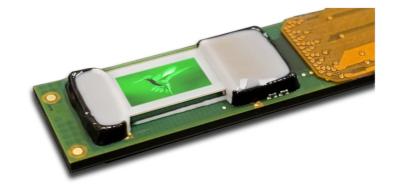
Plessey says that this first functioning microLED prototype validates the successful bonding of Plesseyâs GaN-on-Si microLED array wafer to CP's high-performance 3.015 micron pixel 1080p backplane wafer. The module that was produced (shown above) is a 0.26" FHD monochrome native-green display.
Plessey and WaveOptics to co-develop a microLED optical module for next-generation smart glasses
UK-based GaN-On-Si MicroLED microdisplay developer Plessey Semiconductor announced a new partnership with waveguide designer WaveOptics to develop new optical modules for next-generation smart glasses.

The module will incorporate Plessey's high brightness green Full-HD microLED displays with WaveOptics' Katana waveguide technology and projector design. Plessey says that this module will be the smallest and lowest mass AR display module available on the market.
Plessey demonstrated its latest microLED displays and technologies at CES 2020
UK-based GaN-On-Si MicroLED microdisplay developer Plessey Semiconductor demonstrated several new microLED technologies at CES 2020. First up we have a Head Up Display (HUD) for automotive applications, that is based on a 0.7" blue monochrome MicroLED display:
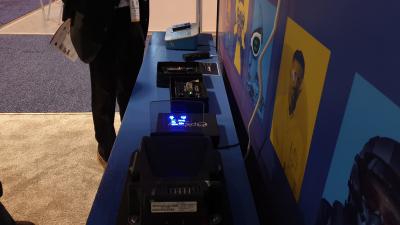
This same display was demonstrated at SID DisplayWeek 2019, and uses JDC's silicon backplane. The next display is a native red InGaN microLED. This is the first time this display was demonstrated:
Plessey develops the world's first InGaN on Silicon red LED
UK-based GaN-On-Si MicroLED microdisplay developer Plessey Semiconductor announced that it has successfully developed the world’s first GaN on Silicon-based Red LED.
![]()
Red LEDs are typically based on AlInGaP materia, or are color-converted from blue LEDs. These red LEDs limit the efficiency and the ability to create ultra-fine pitch sub pixels. Plessey says that InGaN red LEDs will also offer lower manufacturing costs, scalability to larger 200 mm or 300 mm wafers and better hot/cold factor over incumbent AlInGaP-based Red.
Pagination
- Page 1
- Next page

